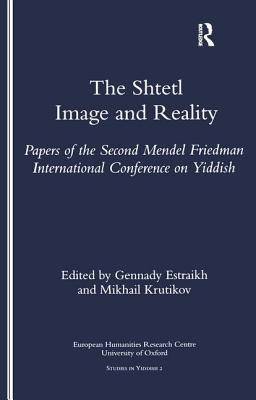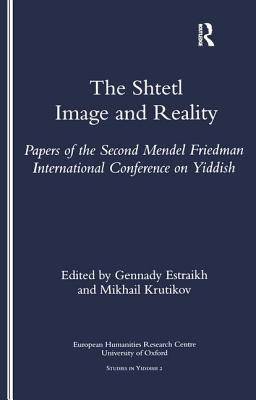
- Afhalen na 1 uur in een winkel met voorraad
- Gratis thuislevering in België vanaf € 30
- Ruim aanbod met 7 miljoen producten
- Afhalen na 1 uur in een winkel met voorraad
- Gratis thuislevering in België vanaf € 30
- Ruim aanbod met 7 miljoen producten
Zoeken
Omschrijving
There is no possibility of entering the world of Yiddish, its literature and culture, without understanding what the shtetl was, how it functioned, and what tensions charged its existence. Whether idealized or denigrated, evaluated as the site of memory or mined for historical data, scrutinized as a socio-economic phenomenon or explored as the mythopoetics of a rich literature, the shtetl was the heart of Eastern European Jewry. The papers published in this volume - most of them presented at the second Mendel Friedman International Conference on Yiddish organized by the Oxford European Humanities Research Centre and the Oxford Institute for Yiddish Studies (July 1999) - re-examines the structure, organization and function of numerous small market towns that shaped the world of Yiddish. The different perspectives from which these studies view the shtetl trenchently re-evaluate common preconceptions, misconceptions and assumptions, and offer new insights that are challenging as they are informative.
Specificaties
Betrokkenen
- Auteur(s):
- Uitgeverij:
Inhoud
- Aantal bladzijden:
- 192
- Taal:
- Engels
Eigenschappen
- Productcode (EAN):
- 9781900755412
- Verschijningsdatum:
- 31/08/2000
- Uitvoering:
- Paperback
- Formaat:
- Trade paperback (VS)
- Afmetingen:
- 138 mm x 216 mm
- Gewicht:
- 452 g

Alleen bij Standaard Boekhandel
+ 175 punten op je klantenkaart van Standaard Boekhandel
Beoordelingen
We publiceren alleen reviews die voldoen aan de voorwaarden voor reviews. Bekijk onze voorwaarden voor reviews.











